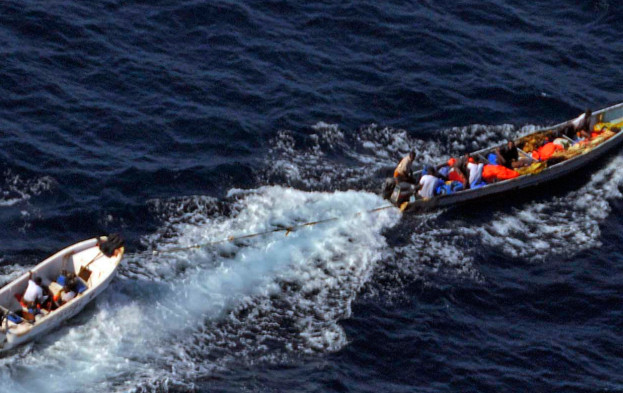
May 13, 2013
Although the number of pirate attacks is either on the wane or has stabilized in most of its former-hot spots, that is not the case in West Africa. Just recently, a German cargo ship was raided by pirates who kidnapped five of the ship’s crew members.
This is a disturbing development, for the Gulf of Guinea has previously seen a slightly different brand of piracy. The gulf off the west coast of Africa hold some of the continent’s largest oil reserves, and also serves as a vital waterway for shipping cocoa and ore. Due to the continent’s rising consumption of oil, pirates have made huge profits from simply robbing ships of their cargo and selling the material to pre-arranged buyers.
However, taking hostages has been the hallmark of eastern African piracy and is much more common in the Indian Ocean and Gulf of Aden. This recent incident may point to a disturbing trend– the increase in kidnapping and ransoming in the Gulf of Guinea.
Ralf Nagel, manager of the Federation of German Shipping Companies (VDR), believes that the recent kidnappings indicate western pirates may be copying the business model of their eastern counterparts.
Ransom attempts are far more dangerous for the hostages involved, and far more financially damaging to the companies that must pay them to save their employees. Some ransoms near Somalia are as high as $5 million USD, while the average score for a pirate who is only committing robbery is less than $1 million.
Ransom situations also have unbelievably steep collateral costs– lawyers and consultants, especially negotiating teams, cost a pretty penny. So do the logistics of any exchange of hostages or cargo– somebody has to take the money to the pirates, and they usually need transportation and security to do so. The ships are also often in terrible shape after extended periods of being seized.
As pirate networks evolve to become more capable and complex, shipping companies must keep pace with their own defensive measures. Unfortunately, most of these measures come at a significant cost– but not as significant a cost as loosing an entire shipment of goods, or even an employee.
Some choose to counter the problem with navigation– ships either steer clear of dangerous waters or travel in convoys. Other ships choose to travel high-risk areas at very high speeds, in order to prevent smaller pirate vessels from a smooth boarding.
Some choose to outfit their decks defensively. Many vessels now come with built-in panic rooms. These rooms are as secure as they can be, and when the alarm is pulled, all crew members can theoretically shack up and ride-out the hijacking. Some critics of this method see he panic-rooms as nothing more than expensive tombs. More common tactics include fixing barbed-wires to key areas of the hull, and stacking sand backs to create difficult to navigate corridors.
The last option is to hire armed security personnel. In the experience of Nagel, this option is the most effective. He says “active resistance by armed forces prevents pirates from hijacking ships and taking the vessel and crew hostage” in the first place. Unfortunately, not all countries allow for armed guards to enter their ports, and specific countries, such as Germany, have no legislation in place to regulate this practice.
Whatever option is chosen, insurance rates are still sky-high when traversing dangerous waters. Add that to the cost of whatever defensive measures are chosen by the shipping company, and one can see why piracy is such an expensive problem.
Piracy in the Gulf of Guinea cost the shipping industry $6 billion USD according to Oceans Beyond Piracy. Maritime security accounts for roughly 30% of that cost, and an additional 30% is spent when ships have to increase speeds to evade pirates and wind up burning more fuel. While these costs seem very steep by themselves, this does not even factor the immeasurable damage this does to the overall economy of the region. Many countries suffer as shipping costs rise and companies are able to do less business in the region.